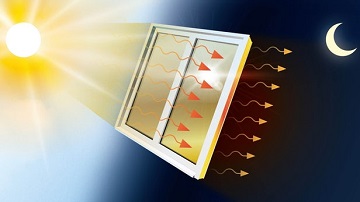 Tuesday, April 23, 2024
Tuesday, April 23, 2024  Tuesday, April 23, 2024
Tuesday, April 23, 2024 
As blogged on New Atlas, a couple of years ago we heard about the MOlecular Solar Thermal(MOST) system, in which solar energy is stored in a liquid medium, then later released as heat. Now, the technology has been applied to a clear film that could be applied to the inside of windows in energy-efficient buildings.
Developed at Sweden’s Chalmers University, the MOST film incorporates a norbornadiene–quadricyclane molecule. This causes the transparent polymer film to take on an orangey-yellow color when not being directly exposed to sunlight.
Once the sun rises in the morning and its rays strike the material, however, much of the sunlight’s solar energy is absorbed by the molecule. More specifically, the molecule captures some of the incoming photons, causing it to isomerize – this means that it temporarily becomes another type of molecule, with exactly the same atoms but in a different arrangement.
As a result, the film not only turns completely colorless, but it also keeps much of the solar heat from getting into the room. The interior of the building thus stays cooler than it would otherwise, reducing the need to run the air conditioning.
In the evening, though – once the sun’s rays are no longer hitting the film – the molecule reverts to its previous form, releasing the stored energy into the room as heat for up to eight hours. This reduces the need for the building’s heating system to kick in.